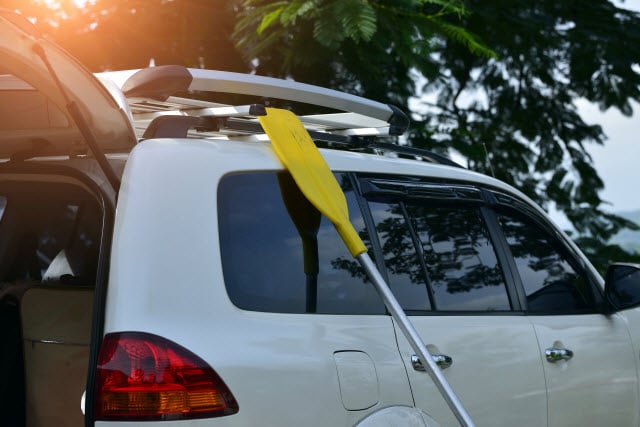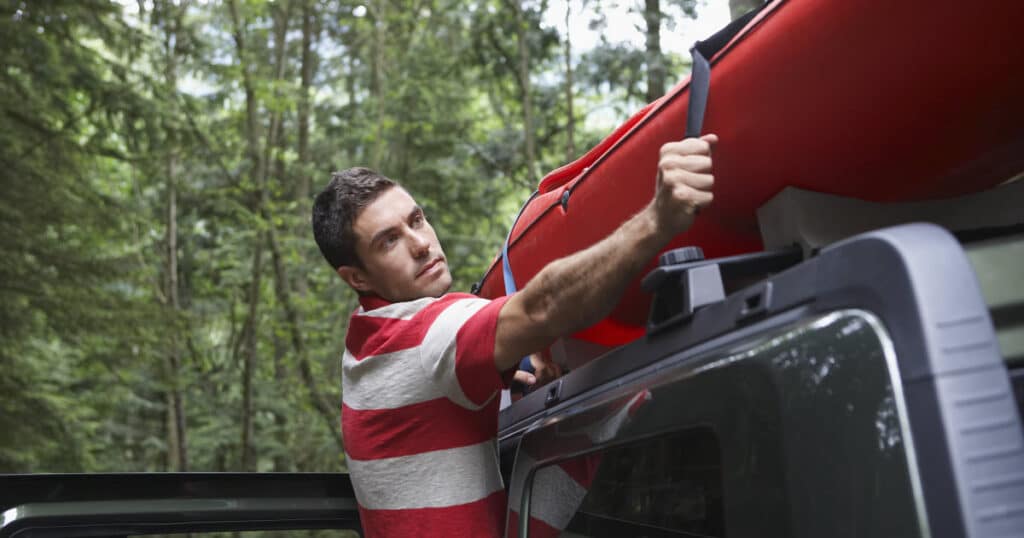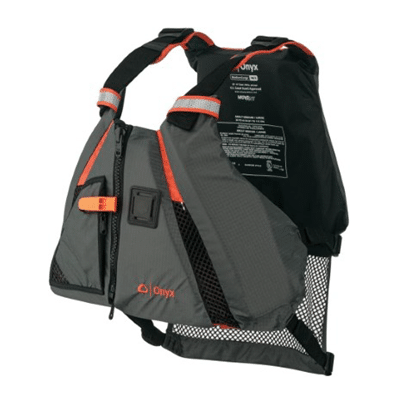If you want to go kayaking, perhaps you’re wondering about transporting a kayak inside an SUV. Depending on the kind of kayak you have, it may be possible to transport a kayak inside your Sport Utility Vehicle, but transporting it on the roof or roof rack is a safer choice. A roof rack is the most popular option, and also the safest. However, you should be able to secure the kayak inside your SUV, though part of it may protrude from the trunk or hatchback door if your kayak doesn’t completely fit inside the vehicle.
In this article, we will go over the most important things you need to know in order to safely transport your kayak inside and on top of a vehicle.
Inflatable Kayaks are Easiest to Transport Inside an SUV
If you have an inflatable kayak, then you won’t have any problem transporting it in your SUV. A lot of the time, you’d even be able to carry an inflatable kayak in a backpack! It’s the inflatable kayak’s portability that makes it so attractive for many.
If you have a traditional kayak, then it will probably be dangerous for you to try transporting a kayak inside an SUV. It could put your safety and the safety of others on the road at risk. It’s much better to install a roof rack and transport the kayak on top of your vehicle.
There are lots of good options for this which are budget-friendly, secure, and easy to install. This kit on Amazon, for example, will work on any vehicle and comes with pads, straps, and tie-downs for a safe and secure ride on your roof. The pads inflate so it’s easy to deflate and store them in the vehicle when not in use.
How to Transport a Kayak in a Larger SUV or Truck
Some larger SUVs and trucks will make it possible for you to transport a variety of different kinds of kayaks.
In a Truck
In order to transport a kayak in the bed of your truck, you need to get the bed ready first. Make sure there isn’t any machinery or hardware in it. After that, put a rubber mat on the truck bed. This will help to protect the kayak, stopping it from slipping or rolling around and preventing friction. It will also provide protection for the truck.
Make sure that the hull is facing down when you load your kayak into your truck bed. If you have a very small kayak and a larger than average truck, you might be able to get the kayak to fit without the extender. In most cases, however, you will need to keep the tailgate open. You could also keep the truck’s tailgate closed and place your kayak with one of its ends in the air. If you use this method, ensure that you add padding to the tailgate. The kayak will also need to be properly secured to the truck bed.
In a Sport Utility Vehicle
In an SUV, you can usually fold the rear seats down to make room in the cargo area, and slide the kayak on its side across the carpeting until the nose rests between the front seats. Do not let the kayak’s nose come too close to your windshield – if you stop short it could slide forward and crack it. Once the kayak is in to the desired length, close the hatchback or rear door and tie it securely with straps or rope, adding padding around your kayak where necessary.

When transporting a kayak in an unorthodox way like this, add whatever safety measures are necessary, such as straps and a red flag on any portion of the kayak that overhangs the tailgate. The more the end of the kayak is sticking out, the more likely it is that you will need a red flag.
Ways You Can Transport Your Kayak Without a Roof Rack
If you don’t have a roof rack but are unable to transport your kayak inside of a vehicle or truck bed, you can make a pool noodle kayak carrier to use instead. To do this, you will need pool noodles, a tie-down strap, and ratchet straps.
You can find pool noodles at supermarkets, dollar stores, or on Amazon. They are made of soft polyurethane and each has one hole in the middle. The pool noodles you buy must be heavy, thick, and sufficiently large to cover the whole width of the roof on your vehicle.
Ratchet straps can be found at automotive stores, hardware stores, or online at Amazon. You can find them equipped with adjustable buckles that let you keep your kayak where you place it. Ratchet straps are comprised of hard nylon. A minimum of two of them will be required for you to secure your kayak.
In the process of creating a pool noodle kayak carrier, you place each of three pool noodles on different parts of the vehicle roof. If you’d like, you can use more than three noodles for extra security. You can find detailed instructions for how to assemble the pool noodle kayak carrier on this website or with a simple Google search.
Now you know more about how you should (and should not) transport your kayak. Make plans according to your resources and preferences, and you’re sure to enjoy a successful trip with no hiccups.



